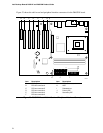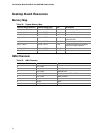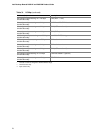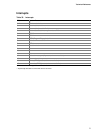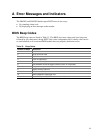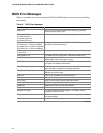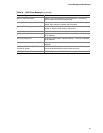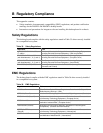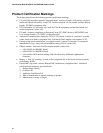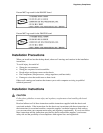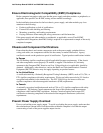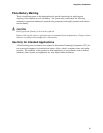Intel Desktop Boards D845HV and D845WN Product Guide
86
Ensure Electromagnetic Compatibility (EMC) Compliance
Before computer integration, make sure that the power supply and other modules or peripherals, as
applicable, have passed Class B EMC testing and are marked accordingly.
In the installation instructions for the host chassis, power supply, and other modules pay close
attention to the following:
• Product certifications or lack of certifications
• External I/O cable shielding and filtering
• Mounting, grounding, and bonding requirements
• Keying connectors when mating the wrong connectors could be hazardous
If the power supply and other modules or peripherals, as applicable, are not Class B EMC
compliant before integration, then EMC testing is required on a representative sample of the newly
completed computer.
Chassis and Component Certifications
Ensure that the chassis and certain components; such as the power supply, peripheral drives,
wiring, and cables; are components certified for the country or market where used. Agency
certification marks on the product are proof of certification. Typical product certifications include:
In Europe
The CE marking signifies compliance with all applicable European requirements. If the chassis
and other components are not properly CE marked, a supplier’s Declaration of Conformity
statement to the European EMC directive and Low Voltage directive (as applicable), should be
obtained. Additionally, other directives, such as the Radio and Telecommunications Terminal
Equipment (R&TTE) directive may also apply depending on product features.
In the United States
A certification mark by a Nationally Recognized Testing Laboratory (NRTL) such as UL, CSA, or
ETL signifies compliance with safety requirements. Wiring and cables must also be UL listed or
recognized and suitable for the intended use. The FCC Class B logo for home or office use
signifies compliance with electromagnetic interference (EMI) requirements.
In Canada
A nationally recognized certification mark such as CSA or cUL signifies compliance with safety
requirements. The Industry Canada statement at the front of this product guide demonstrates
compliance with Canadian EMC regulations. Industry Canada recognizes and accepts FCC
certification as denoting compliance with national electromagnetic interference (emissions)
requirements.
Prevent Power Supply Overload
Do not overload the power supply output. To avoid overloading the power supply, make sure that
the calculated total current loads of all the modules within the computer is less than the output
current rating of each of the power supplies output circuits.



